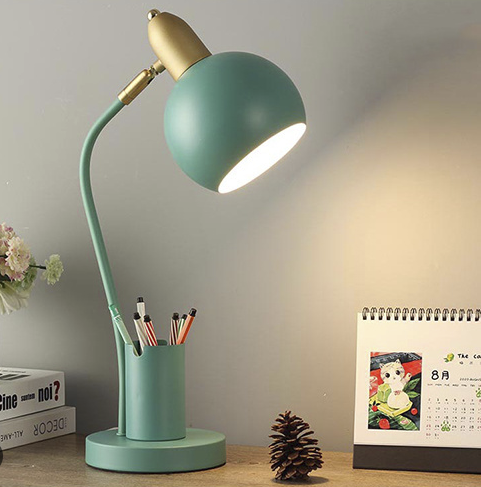When I think about the significance of proper lighting in a home office, I realize that it goes far beyond mere aesthetics. The right lighting can dramatically influence my productivity, mood, and overall well-being. In a space where I spend countless hours working, the quality of light can either enhance my focus or lead to fatigue and distraction.
Poor lighting can cause eye strain, headaches, and even a decline in my motivation to work. Therefore, investing time and resources into creating an optimal lighting environment is essential for anyone who works from home. Moreover, the psychological impact of lighting cannot be overlooked.
Natural light, for instance, has been shown to boost mood and energy levels. When I position my desk near a window, I often find that the influx of daylight not only brightens my workspace but also uplifts my spirits. Conversely, dim or harsh artificial lighting can create a dreary atmosphere that stifles creativity and enthusiasm.
By understanding the importance of proper lighting, I can create a home office that not only supports my work but also nurtures my mental health.
Types of Lighting for a Home Office
Understanding Ambient Lighting
In my pursuit of finding the perfect lighting Xlightings for my home office, I’ve come to realize that there are several types of lighting to consider. Ambient lighting serves as the foundation of any well-lit space, providing general illumination that allows me to navigate my office without straining my eyes. This type of lighting can come from various sources, including ceiling fixtures, floor lamps, or even wall sconces. I often opt for soft, diffused ambient light to create a warm and inviting atmosphere in my workspace.
The Importance of Task Lighting
Task lighting is another crucial element in my home office setup. This type of lighting is specifically designed to illuminate areas where I perform focused tasks, such as reading or writing. Desk lamps with adjustable arms allow me to direct light exactly where I need it most, reducing shadows and enhancing visibility. This targeted lighting approach enables me to work efficiently and effectively.
Creating a Layered Lighting Effect
I’ve found that using task lighting in conjunction with ambient lighting creates a layered effect that adds depth and dimension to my workspace. By combining these two types of lighting, I can create a visually appealing and functional space that meets my needs. This layered approach allows me to adjust the lighting levels to suit different tasks and moods, making my home office a comfortable and productive space.
Choosing the Right Light Bulbs
Selecting the right light bulbs is a critical step in achieving the desired ambiance in my home office. I’ve learned that not all bulbs are created equal; they vary in brightness, color temperature, and energy efficiency. For instance, I prefer LED bulbs for their longevity and low energy consumption.
They not only save me money on electricity bills but also produce less heat compared to incandescent bulbs, which is a significant advantage during long working hours. Color temperature is another factor I consider when choosing light bulbs. Warm white bulbs (around 2700K) create a cozy atmosphere that feels inviting, while cool white bulbs (around 4000K) offer a more energizing effect that can enhance focus and alertness.
I often experiment with different color temperatures to find the perfect balance for my workspace. Ultimately, the right light bulbs can transform my home office into a space that fosters creativity and productivity.
Positioning and Placement of Lights
The positioning and placement of lights in my home office play a pivotal role in creating an effective workspace. I’ve discovered that strategic placement can minimize glare on screens and reduce shadows on my work surface. For instance, placing my desk lamp to the side rather than directly in front of me allows me to see my work clearly without being blinded by the light source.
Additionally, I’ve found that layering different types of lighting enhances the overall effect. By combining ambient lighting with task lighting, I can create a balanced environment that adapts to various activities throughout the day. For example, during video calls or meetings, I adjust the positioning of my lights to ensure that my face is well-lit without casting harsh shadows.
This attention to detail not only improves my comfort but also enhances my professional appearance.
Stylish and Functional Lighting Fixtures
In my pursuit of the perfect home office lighting, I’ve come to appreciate the importance of stylish and functional fixtures. A well-chosen light fixture can serve as a focal point in the room while also providing essential illumination. I often explore various designs, from sleek modern lamps to vintage-inspired chandeliers, to find pieces that resonate with my personal style.
Functionality is equally important when selecting lighting fixtures. I look for options that offer adjustable brightness or color temperature settings, allowing me to customize the lighting based on the time of day or the task at hand. For instance, a dimmable desk lamp enables me to create a softer ambiance during late-night work sessions while still providing ample light for detailed tasks.
By combining style with functionality, I can create an inspiring workspace that reflects my personality while meeting my practical needs.
Tips for Creating a Well-Lit and Productive Home Office Environment
Maximizing Natural Light
Creating a well-lit and productive home office environment requires careful consideration and planning. One of the first tips is to maximize natural light whenever possible. Positioning a desk near a window not only brightens the space but also connects you with the outside world, which can be refreshing during long work hours. Using sheer curtains allows natural light to filter through while reducing glare on computer screens.
Adapting to Changing Lighting Needs
Regularly assessing and adjusting the lighting setup based on changing needs is essential. As seasons change and daylight hours fluctuate, it’s beneficial to reevaluate how light enters the workspace. During winter months when natural light is scarce, it may be necessary to rely more heavily on artificial lighting. Incorporating plants into the office can enhance both aesthetics and air quality while providing a sense of tranquility.
Maintaining a Productive Workspace
Maintaining an organized workspace contributes significantly to effective lighting. Clutter can obstruct light flow and create shadows, making it harder to focus on tasks at hand. By keeping the desk tidy and ensuring that light sources are unobstructed, it’s possible to create an environment that promotes clarity and concentration. Proper lighting in a home office is not just about illumination; it’s about creating an environment that fosters productivity and well-being.
Transforming the Workspace
By understanding the different types of lighting available, choosing the right bulbs, strategically positioning lights, selecting stylish fixtures, and implementing practical tips, it’s possible to transform the workspace into a haven of creativity and efficiency. Prioritizing lighting as an essential element of work-life balance can lead to a more productive and fulfilling work experience.




